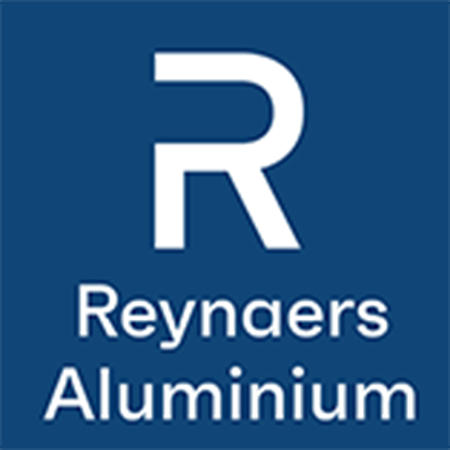For primary aluminium, Reynaers focuses on purchasing aluminium produced with sustainable energy, aiming to contribute to the reduction of the carbon footprint.
Inevitably, electricity is required to produce aluminium. However, we can choose the energy source from which electricity is produced, and this decision reflects our impact on our carbon footprint. Reynaers has made agreements with their suppliers in that they no longer want to purchase aluminium produced with polluting energy sources, such as coal – opting for more durable and sustainable electricity sources instead.
The aluminium industry is constantly focused on improving the carbon footprint of the aluminium production. A big part of this carbon footprint is related to the need for electricity in the production process. Globally, the carbon footprint of aluminium is more than 10 kg CO2 / kg aluminium (even up to 20 kg CO2 / kg aluminium). The aluminium used in Europe currently has an average of 8.6 kg CO2 / kg aluminium. The majority of this CO2 is attributable to the electricity source. By using ‘green electricity’, the footprint can drop to 4 kg, which is known as ‘low carbon aluminium’. Most of the low carbon aluminium today is made by electricity from hydropower plants.
Reduced electrical consumption per ton of aluminium
The Hall-Héroult process, an electrolytic process, is used to turn aluminium oxide in primary aluminium. Currently there are no viable alternatives to this process. However, continual progress has been made over the more than 110-year history of aluminium processing to reduce the amount of electricity used. In the past two decades, the energy efficiency of the Hall–Héroult process has been improved by 20 percent. The focus on improving the energy consumption during this process remains top priority, as this represents a large percentage of the cost of the aluminium production.
New future innovations lead to less CO2
New innovations ensure that the 'residual impact' can decrease even further. Different manufacturing companies worldwide are working on new breakthrough techniques to further reduce the CO2 impact in aluminium production. One of the techniques is replacing the carbon anodes in the electrolytic process by a ceramic material so that only oxygen is emitted. This reduces direct carbon emissions to nearly zero, if used in combination with carbon neutral electricity. These innovations are researched throughout the world, in close cooperation with institutes and associations.
Reynaers Aluminum is an active member of European Aluminium. This organization is strongly committed to improving the impact.
Clear focus on sustainable aluminium
In the near future, there will be more improvements in the energy efficiency of the aluminium process. Reynaers commitment to sustainable energy will allow them to have greater impact in closing the aluminium loop.
That means investing in:
• Low carbon aluminium
• Recycling aluminium
• Future improvements to reduce the carbon footprint
Reynaers commitment to low carbon aluminium
| T | (0121) 421 1999 |
|---|---|
| F | (0121) 421 9797 |
| E | reynaersltd@reynaers.com |
| W | Visit Reynaers Aluminium Ltd's website |
| Hollymoor Way, Northfield, Birmingham, B31 5HE |
Categories
Aluminium doors Aluminium windows Window components







